Meet Nicholas White | Photographer and Journalist
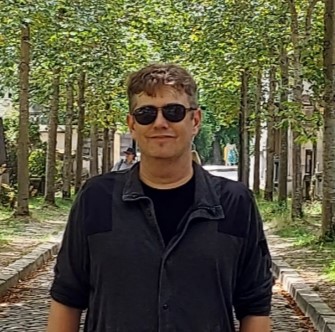
We had the good fortune of connecting with Nicholas White and we’ve shared our conversation below.
Hi Nicholas, we’d love to hear more about how you thought about starting your own business?
Starting a business as an independent content creator happened when my goals, as with so many people, began to outstrip market opportunities. The best way to build was vertically when the lateral paths were limited.
One of the most challenging parts of starting a business is overcoming others’ skepticism. If there is a cultural emphasis, for example, on working for someone else as a means of steady income, instead of owning a business without the promise of steady income, escaping inertia to start a business can be like flying a shuttle out of a planet’s gravitational orbit. Overcoming doubt takes fortitude. It’s crucial not to wither in the face of adversity.
All backgrounds, including painting graffiti in the middle of the night, can season people to go their own way. A commercial enterprise requires some kind of formal structure. Facilitating independent art development isn’t generally the first place for a massive investment check to come from Silicon Valley.
Instead, contemporary photography as a business started for me the way it does for some independent musicians, who offer a library of content online essentially for free — like mixtapes on Spotify — to build awareness, value, and leverage in different market sectors for opportunities.
Because photographing someone else’s art isn’t a business – the images are rightly owned and created by the artist – graffiti art photography is an avenue to introduce myself as a content creator of all types.
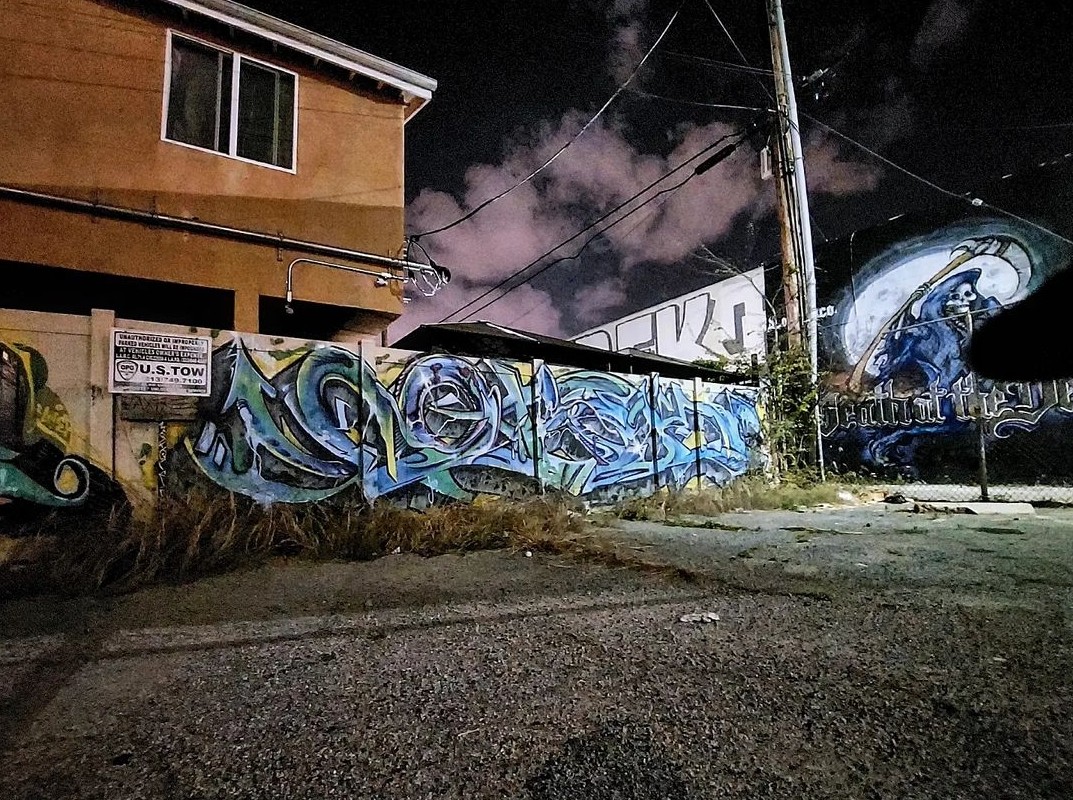
Can you open up a bit about your work and career? We’re big fans and we’d love for our community to learn more about your work.
I photograph graffiti art around L.A., mostly in South Central, with my Android Samsung A71 camera. I readily admit I am not an expert in these areas — both photography and graffiti art — and I do this to have fun. Some people treat L.A. graffiti with generations of respect. I understand that. Graffiti art isn’t my property to represent.
This art mostly isn’t about money, which is often derided as the essence of deception and thievery in this anti-commercial world. Businesses that have tried to misappropriate graffiti art for profit without permission or compensation, like American Eagle, have been sued and blacklisted by the community.
For photography, some people might say phone photos lack the sophistication and technical detail of professional cameras, which can separate images into frames per second. In the context of dashing around the city for quick-and-dirty graffiti shots on dark streets, expensive high-end cameras can be clunky and stifling to free-moving creativity. Lugging a valuable piece of equipment in an area in which the streets may be watching is an avoidable problem. A $5,000 buy-in for a beautiful camera also can be an unattainable initial investment for some people, pricing them out from being taken seriously because they don’t have that much money.
Graffiti photographers often take straight shots of graffiti or artsy shots of street art. My slightly different signature has dramatic lighting and incorporation of the neighborhood’s personality. My mindset comes from visiting a new community and giving it slanted visual energy.
One way to photograph compelling graffiti art without breaking the protocol lines of secrecy and tattling writers take seriously is to focus on mostly legal graffiti art, which is protected by copyright law regardless of vandalism status by the highly unique artistic value. Both garden variety wall-art enthusiasts and isolationist vandal taggers can agree on this kind of independent art.
The streets of downtown L.A. have become increasingly coated in graffiti pieces — miles and miles of them, from freeway entrances to overpasses, through alleys and along factory exteriors, and into high-visibility graffiti yards. It is an independent, non-corporate creative community. There is plenty of cool stuff to photograph, and friendly, very smart artists with whom to build. Although the loud colors clash in a stylistic free-for-all, the explosion of creativity is a museum-like collection of local talent.
Evolving into the graffiti art photography of my career happened by accident. I had been an entertainment journalist for 14 years, interviewing celebrities on Hollywood red carpets for national outlets. I’ve interviewed Beyonce, Robert DeNiro, George Clooney, and Viola Davis, to name a few. I developed a specialty in breaking news from brief celebrity interviews.
This Hollywood world was far from the electric glimmer of graffiti art spreads in grimy downtown. It was an unexpected blessing to have an injection of newness and energy that felt like being thrust into a mosh pit after a long time on the red carpet. It was crucial to have a break to grow separately in different worlds. I was a lowkey independent hip-hop fan steeped in the aesthetic, encapsulating the vibe of graffiti art was comfortable. Bringing out the scary undercurrent was part of the fun.
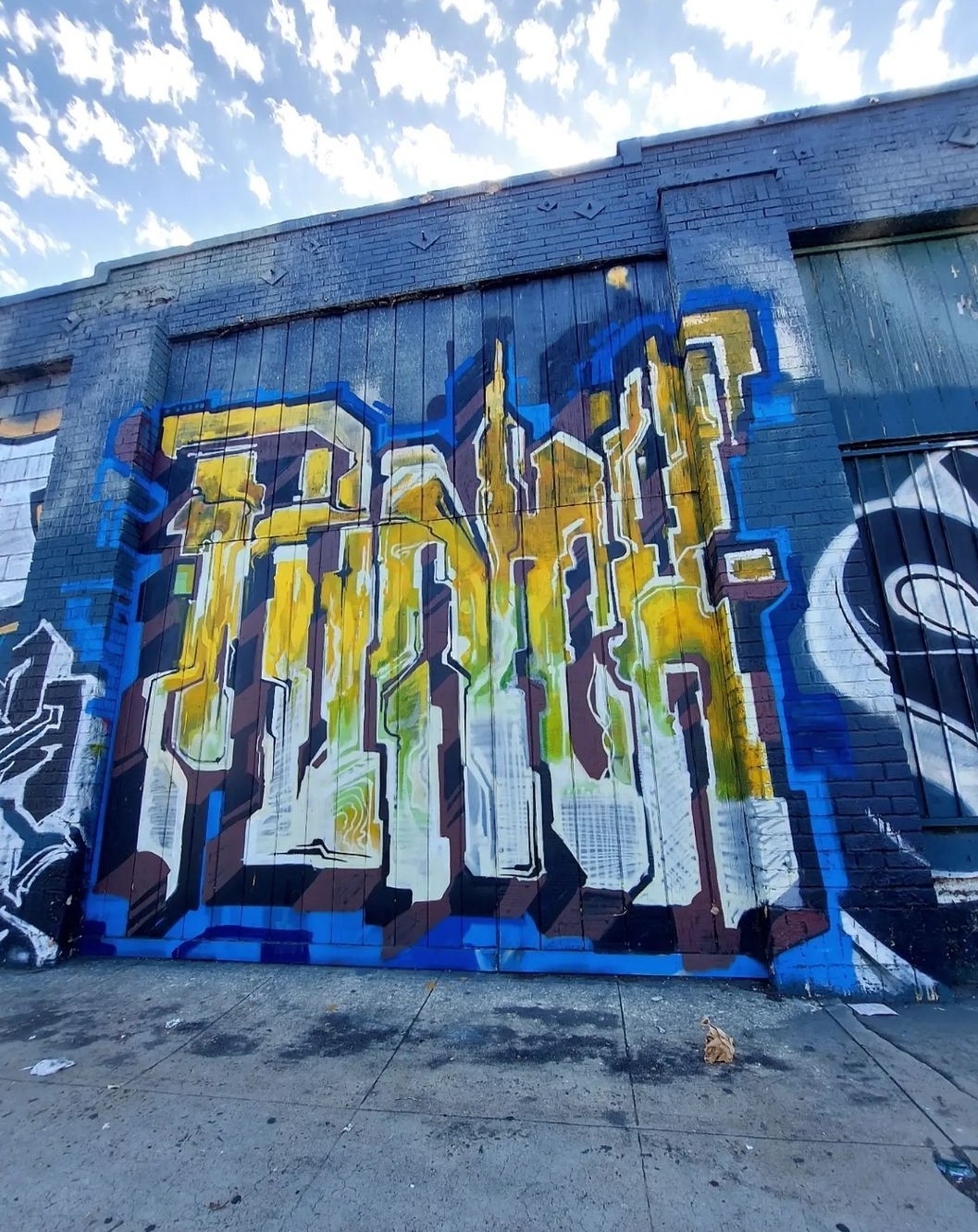
If you had a friend visiting you, what are some of the local spots you’d want to take them around to?
The one-size-fits-all place to start a L.A. trip is Venice, which has the ocean, a famous skate park, graffiti walls, quality food, and a street market scene. Venice brings street and classy elements together in one place, like New York City subways.
Venice’s Townhouse, which is a former speakeasy, has high-energy dance nights with Anthony Valadez on the decks. The poke is fresh near the beach.
I like going to Claremont to soak up the peaceful quirkiness as a re-energizer with a walk around Claremont Village, which hasn’t changed much since the late 1990s, when I went to school there. Ben Harper’s family has a folk store there. Climbing at the lower levels of forest-y Mount Baldy north of Claremont is a clear-breathing afternoon.
The getaway of driving Mulholland Highway through Agoura is a miniature vacation through a sprawling landscape of trees before returning to grindy L.A. day to day. Motorcycles try to take ownership of this twisty, two-lane road with racing maneuvers, which is part of the experience.
Driving through South Central and East L.A. to see the city’s beautiful graffiti art is a trip through a unique L.A. outdoor art gallery experience. The scope and talent of the community is enlightening to newcomers.
West Hollywood’s funky street art spread is easily accessible to beginners, and there are plenty of good places to eat and drink on Melrose Ave.
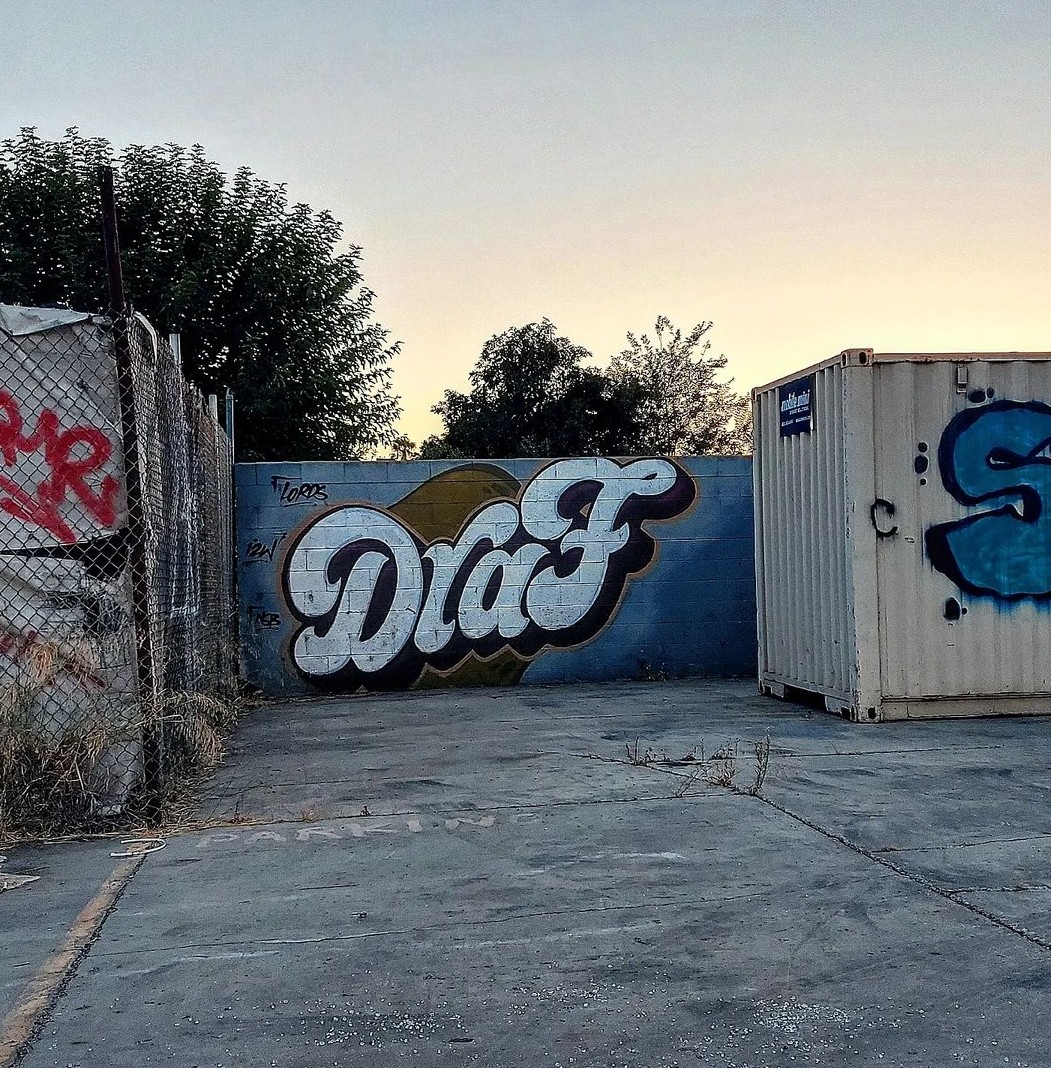
Shoutout is all about shouting out others who you feel deserve additional recognition and exposure. Who would you like to shoutout?
Thank you to God, my wife, Nancy, and my parents, David and Vicki, for their years of kindness, support and inspiration.
My gratitude as a graffiti art photographer goes to the graffiti crew K4P, which has helped make a world relatable that is mostly designed to be opaque to outsiders. Their artist Notik is an underrated talent with a sense of humor in his work, such as a friendly-looking graffiti character shooting down a street art butterfly in Hollywood.
In general, L.A. graffiti artists’ talent, creativity, and personality exceeds those in most cities. That the American entertainment industry is based here doesn’t hurt in establishing high artistic standards. The detail of thousands of graffiti pieces in all corners of the city is astounding. Pay is nominal if any for the work invested, and credit is dedicated invariably to the graffiti crew before the individual.
Some of the artists I owe a debt of gratitude for helping me to make sense of the scene include Mers, Tetris, Zuco, Sellout, Thus, Atlas, Baya, Petal, Bat, and Vyal.
A creative credit to author Mike Davis, whose frantic, dystopian L.A. from his books City of Quartz and Ecology of Fear influences my visual style.
In my entertainment journalism career, I was blessed with good luck and supportive mentors, who helped me become a better storyteller, including Cynthia Wang, Carole Willcocks, Stephen Silverman, Marisa Laudadio, Brenda Rodriguez, Bekah Wright, Rachel Fourteau, Jon Ziomek, Marc Malkin, Michele Stueven, Ingrid Meilan, William Keck, Dan Snierson, Kit Bowen, Carita Rizzo and Scott Huver.
Instagram: https://www.instagram.com/nicholas.e.white/?hl=en
Linkedin: https://www.linkedin.com/in/nicholasewhite/
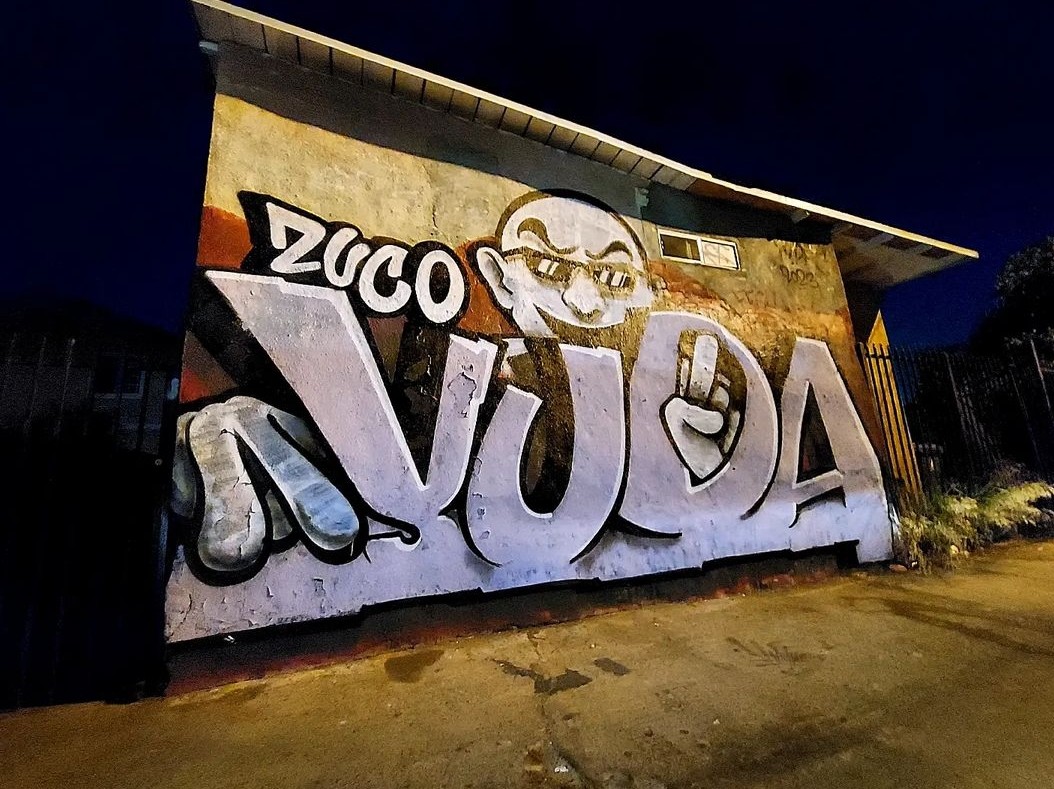
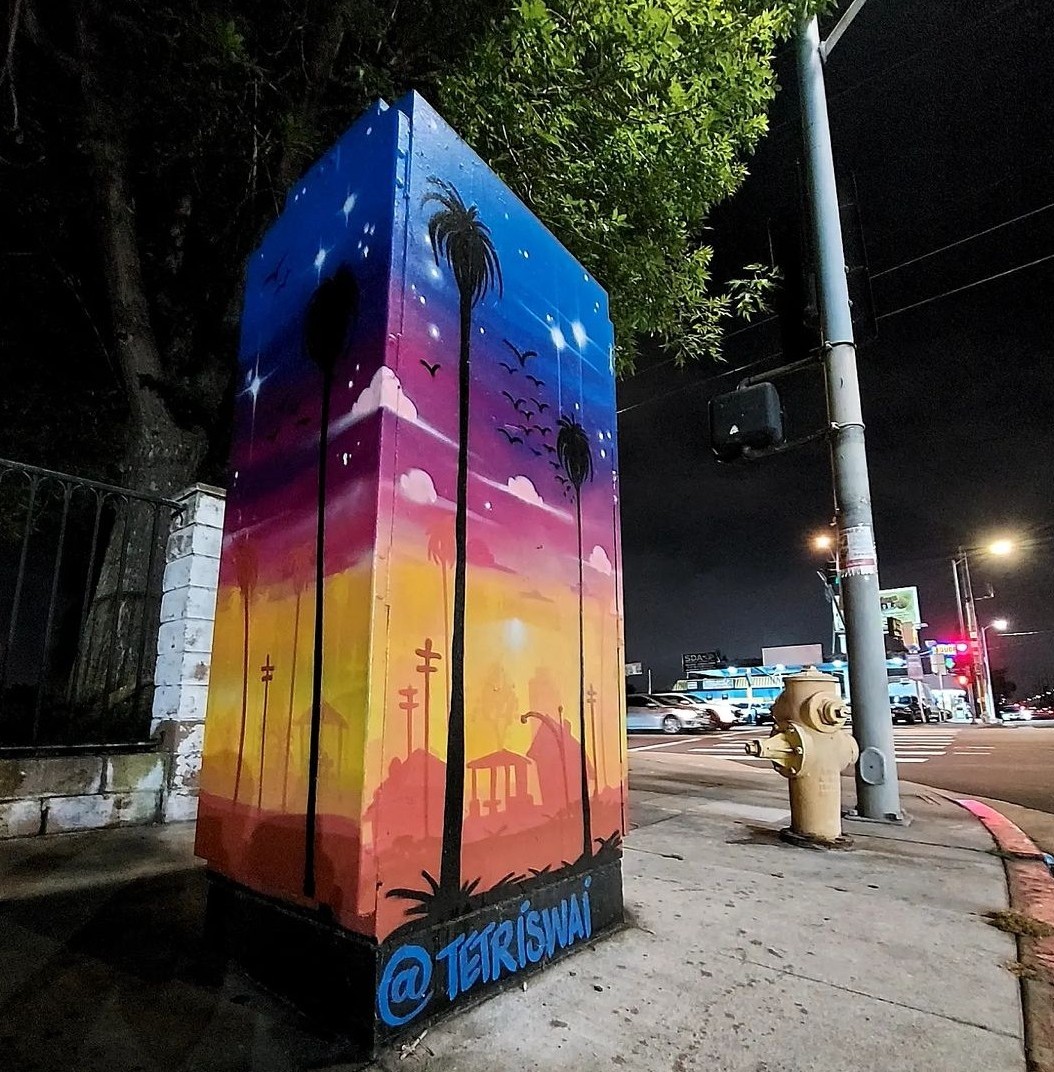
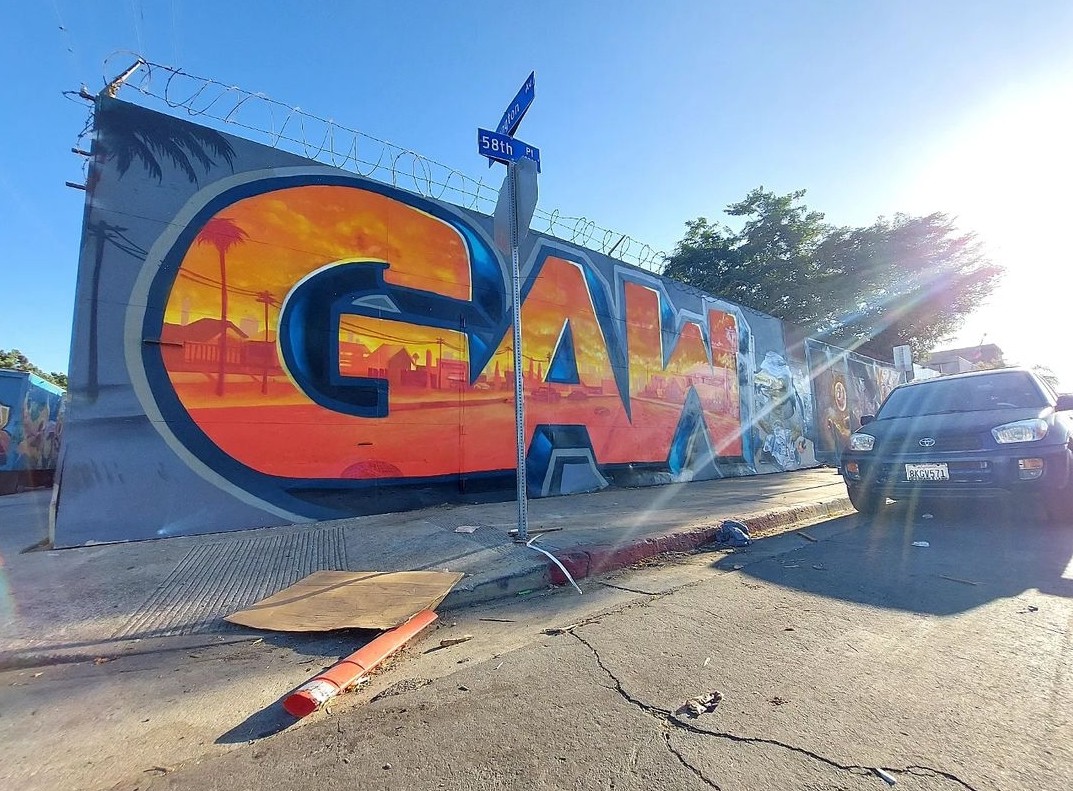
Image Credits
All photos are mine.
Artist credits:
1) Notik (@pinche_notik)
2) Punch (@puncher1000)
3) Draf (@___draf___)
4) Zuco and Yuda (@lionjaguar and @colorfulskidmarks)
5) Tetris (@tetriswai)
6) GAW Cru (@gawcru)
